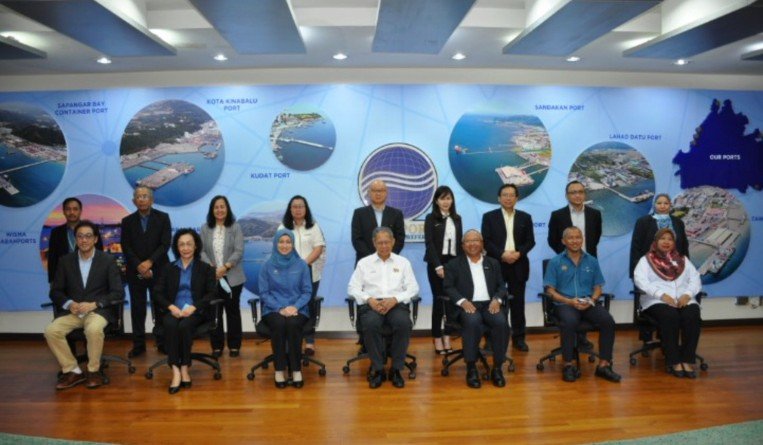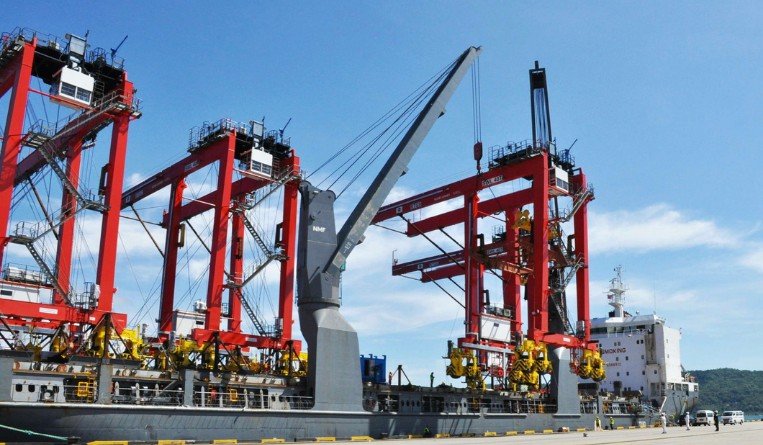As the Covid-19 pandemic begins to show signs of abating, Sepangar Bay Port in Kota Kinabalu has underlined plans to be the transhipment hub of choice of the Brunei, Indonesia, Malaysia and Philippines East ASEAN Growth Area (BIMP-EAGA), attendees at a Transport Events webinar was told – even though alternative strategies are being outlined.
“We have a very strategic location as a hub,” Kiat Min Ng, the Kota Kinabalu-based managing director of Sepangar Bay ’s parent company, Sabah Ports, said during the webinar, adding it could go on to “focusing on intra-ASEAN trade linking the region with the Far East.”
Location is the key part of Sepangar’s push for hub status. On the northwestern tip of Borneo, it is “roughly in the centre of ASEAN and is the ideal location for trading,” Ng pointed out. Such a position puts it to the south of Asia’s typhoon belt and to the north of the volcanic “ring of fire,” meaning disruptions are fewer.
Currently, Sepangar’s facilities are small, with only a 500 metre wharf, a 15 hectare stacking area and 12 metres of draft. This limits its container throughput, Ng said, to about half a million TEUs. That is set to change, with Sepangar Bay being “strongly supported by the government to reach 1.25 million TEUs in 2025,” Ng added.
One reason for optimism within the port community is a belief that it can achieve its goal by new infrastructure and facilities, including free trade zones. “We have the potential for distriparks. This will allow us to do more in terms of the role of the port,” Ng said.
There is some support for this – and quite a lot of work still to do, according to Ei Sun Oh, principal adviser at the Pacific Research Centre, Malaysia. “We need such free trade zones,” he said. “There needs to be a roll out – and very expeditiously,” he told the webinar.
It is quite a pressing problem, he went on to say, pointing out Malaysia’s need to reduce its red tape, especially over land use and conversion as well as building approval. It can take up to three years to get a factory approved in Malaysia, whereas Vietnam will often do so it in six months, he said.
Some new supporting infrastructure is going in Sabah province, one of the poorest in Malaysia. However, rail, the key to developing a hub, is still not happening, Ng said.
What is happening, though, is roads, something which helps Sepangar in its bid to be a distribution centre not just for Malaysia’s Sabah province but across the whole island of Borneo, which also covers the Indonesian province of Kalimantan and the country of Brunei, as Anthonie Versluis, a Kuala Lumpur-based senior advisor at management consulting company Roland Berger, pointed out.
Versluis offered a more qualified version of Sepangar Bay’s future and what is best described as a constructive reform of the plan with a clear and more practical resetting of goals.
Rather being a megahub, or preparing to be one, Sepangar should focus on local distribution and transit, and local and regional value-adding for export. “These three areas I see as the major opportunities for Sepangar Bay,” Versluis said.
This came after an examination of the existing business in the area, which was best described as sobering, at least for those who see the port as the region’s next megahub.
Main container lanes are to the west of Sabah, with the main dry bulk lanes being to the east, and it is not going to be possible to develop either traffic to the point of being a hub, he said. That would require somewhere between 3 and 4 million containers to be shipped annually – effectively a six- or eightfold increase. “This is many years in the future,” Versluis said.
Even within its own region, Sepangar Bay is not making much impact.
Traffic within the Sulu Sea, Sabah’s home base, the water to the north east of Sabah and so between it and the Philippines, is limited, he also pointed out. “What you don’t see is much shipping between Sabah and the Philippines,” he said.




